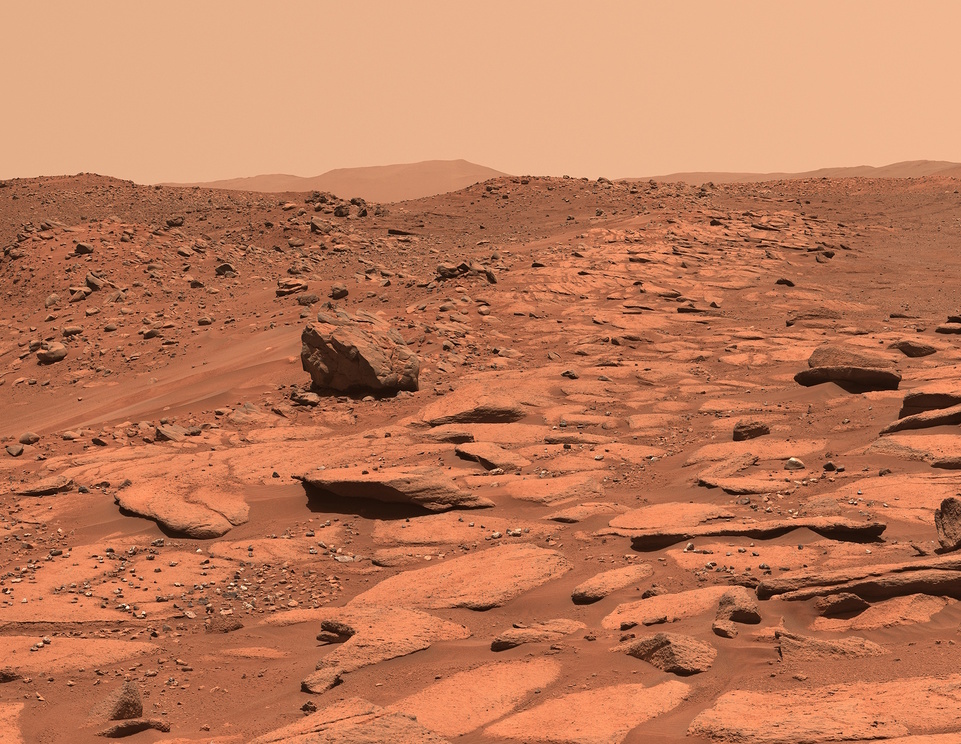The Mastcam-Z instrument aboard NASA’s Perseverance rover recently took 152 photos exploring the Belva Crater, a large impact crater inside the much larger Jezero crater. All the images are put together in a large panorama, which provides the scientific team of the rover with a deep view of the interior of the crater.

The Jezero crater on Mars, which is currently being explored by the NASA Perseverance rover, has a diameter of almost 45 kilometers. It was probably formed as a result of a huge asteroid impact. But it wasn’t just one asteroid. It is believed that several asteroids have crashed into this area over millions of years, forming a sequence of craters that overlap and fit into each other.
Thanks to the images from the rover, geologists have the opportunity to explore each layer to find the key to Mars’ past. For example, when the surface of the planet had water, the proof to which has been found more and more now.

“Our scientific team was very keen to create a panoramic image in order to study Belva Crater in detail. Impact craters can reveal touching landscapes and provide an opportunity to study in detail the sections that provide important clues to the study of the origin of these rocks in perspective and at scale,” explained Perseverance scientist Kathryn Stack Morgan.
Additionally, the Perseverance team processed the image in stereoscopic 3D. Such a three-dimensional version of the mosaic is called an anaglyph. In fact, this is more than just a funny feature for the average viewer. When trying to look at a complex structure such as a crater, using 3D can help scientists see various features that they may want to pay attention to. In this mosaic, they found layers of sedimentary rocks that tilted at an angle, which could be a sandbar created by a river that flowed through this region.

“The anaglyph helps us visualize the geological connections between the outcrops of the crater walls. But it also gives the opportunity to just enjoy the magnificent view. When I look at this mosaic through red-blue 3D glasses, I am transported to the western edge of Belva, and I wonder what future astronauts would think when they are standing where Perseverance has been,” says Stack.
To view all the details of the huge final mosaic image, you can go to the NASA Jet Propulsion Laboratory website, where a high-resolution version of the image is posted.
Follow us on Twitter to get the most interesting space news in time
https://twitter.com/ust_magazine

